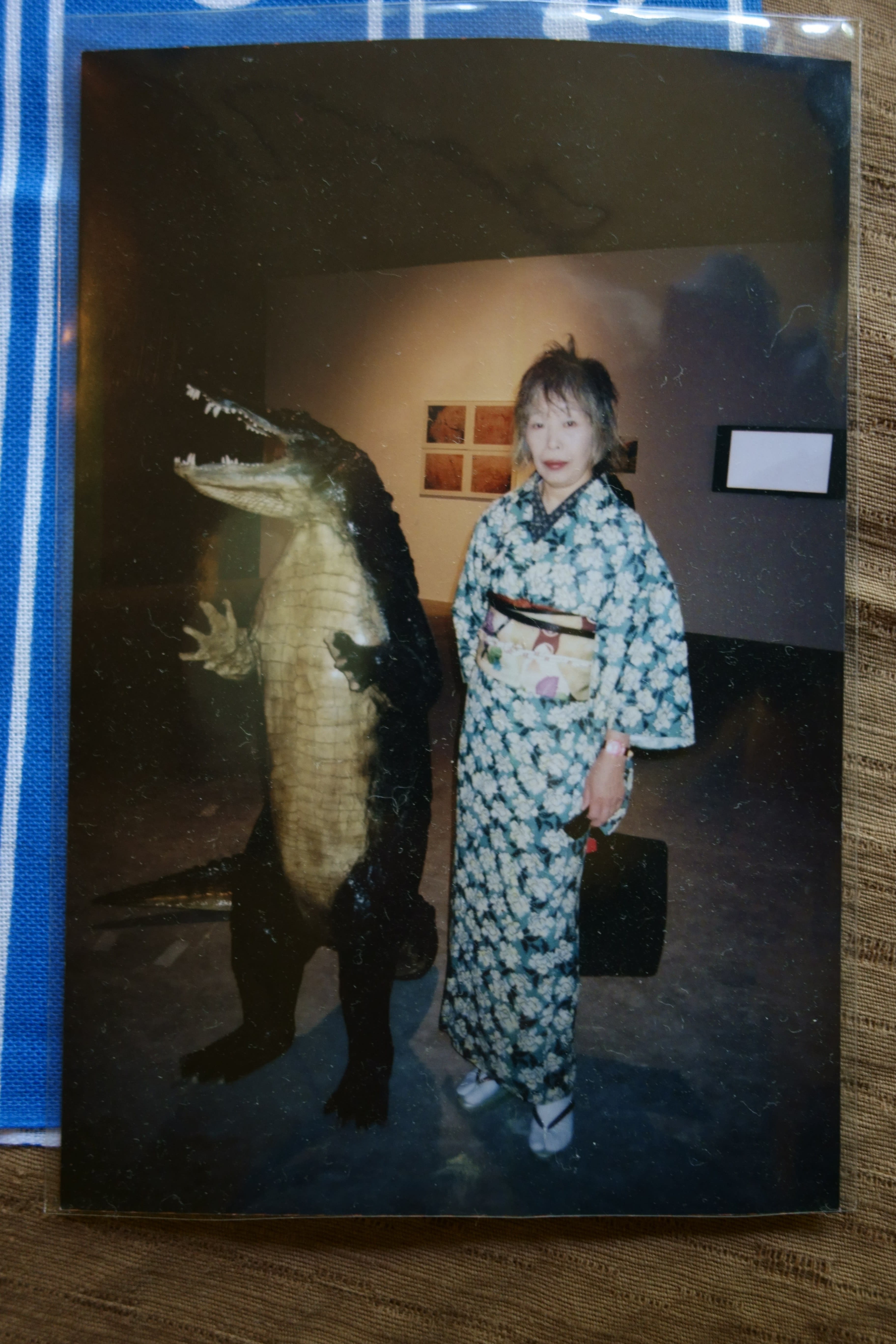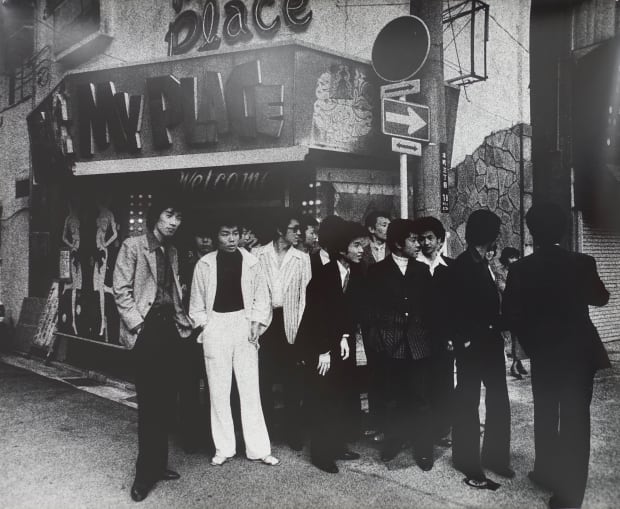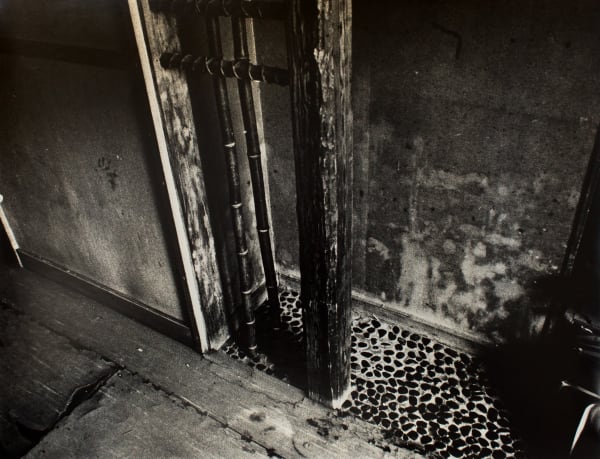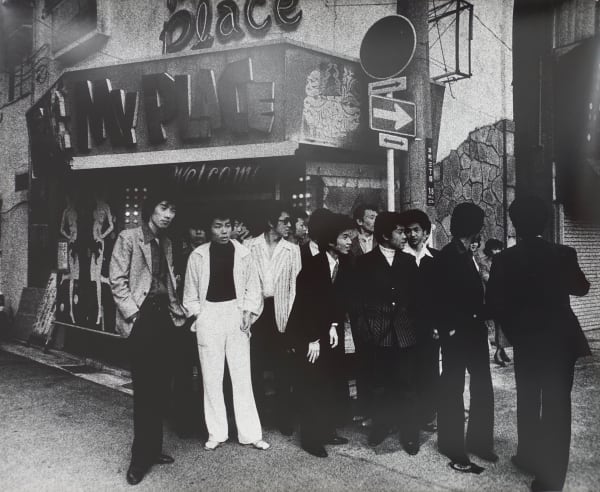-

-
ISHIUCHI MIYAKO
-
Michael Hoppen:"I sometimes need to remind myself that new and interesting things can be illuminated quite by chance, and when one is least expecting it. Sometimes an image presents itself - either pointed out, discovered at random whilst browsing a bookshop, or in casual conversation with friends - and one’s interest is sufficiently piqued to delve deeper and find out more".
-

-
Manfred had decided to publish a small, beautifully designed monograph about Ishiuchi in collaboration with the Dutch photographer Machiel Botman, and he was aware of my increasing fascination with Japanese photography and books. I had heard about Ishiuchi, but I had not seen much of her work in person. Her series ‘Mothers’ had been chosen to represent Japan at the 2005 Venice Biennale, and whilst I had not been able to visit this exhibition, I was eager to find out what I was missing.
I flew to Prague to attend the opening of her show at Langhans, a well-known photography gallery in the heart of the city. I remember being particularly impressed by the extraordinary simultaneous translator, who fielded questions from the Czechoslovakian audience translating into Japanese and also English!
-

-
She would dress again like this at her Getty Museum opening several years later.
-
Ishiuchi’s exhibition was spectacular in every way, transforming the space with her provocative choice of subject matter, masterly printing technique, and the iconic, bold hang for which she is rightly famous. The show changed my view of Japanese photography forever, and we have continued to work together ever since. We have held five shows of her work in London over the past 15 years and I love having her photography on the walls of the gallery.
-
ISHIUCHI IN JAPAN
-
I have been fortunate to visit Ishiuchi at her home in Japan many times, and she has managed to find new and fascinating pictures for me to look through on each visit; I have met few photographers who have made so many extraordinary images.
-

-
-
-
-
The Yokohama Museum paid homage to this technique in the title of her major 2017 retrospective, Grain and Image (2017). I very much enjoyed visiting this exhibition, which Ishiuchi took me around in person and explained many of the individual images to us and why she made them. The curator she worked with, presented a superb selection of works chosen from across Ishiuchi’s career, many of which I had never seen before.
-

-
FEATURED VINTAGE WORKS
-

This photograph was taken in Yokosuka, a small port to the south of Tokyo, on the site of a large American naval base. During these years of military occupation Yokosuka was infiltrated by American culture, and in turn the visual landscape reflects the struggle between local and foreign, past and present and the uncertainty of Japan’s future identity.
Here, we see a close up of the back of an American (possibly a service-man?) wearing a denim jacket embroidered with a skull and crossbones and the words ‘USS Rathburne’ and ‘You’ll Never Go Again!!’ as he is about to cross the road. The ambiguity of the scene is highlighted in Ishiuchi’s choice of angles and cropping. It is known that she photographed from a moving car at times, often taking pictures whilst her subjects were not looking. In Yokosuka Story Ishiuchi often exposed the photographic paper for long periods of time, sometimes up to thirty minutes, turning skies that would usually appear white into a dark and grainy grey. This long exposure time can also be seen as related to her desire to transfer onto each image the entire memory of the experience of shooting the picture.
This print is from the series Yokosuka Story, which was first exhibited in 1977 and which was to be the first of a trilogy of photographic series that each explore different aspects of the town's public and private spaces, united by the artist's distinctive photographic approach. It is thought that this is the first print that Ishiuchi made from the negative - there are other examples in the J Paul Getty Museum and the Yokohama Museum of Art. This print is in perfect condition and so it is a rare example of an excellent vintage print from one of Ishiuchi's most significant early series.
Image: Yokosuka Story #73, Ōdaki-chō, 1977
-
-

-
FEATURED WORKS - VINTAGE
-
 Ishiuchi Miyako, Yokosuka Story #73, Ōdaki-chō, 1977
Ishiuchi Miyako, Yokosuka Story #73, Ōdaki-chō, 1977 -
 Ishiuchi Miyako, From Yokosuka, 1981
Ishiuchi Miyako, From Yokosuka, 1981 -
 Ishiuchi Miyako, Apartment #60, 1978, 1978-79
Ishiuchi Miyako, Apartment #60, 1978, 1978-79 -
 Ishiuchi Miyako, Apartment 4, 1978, 1978-79
Ishiuchi Miyako, Apartment 4, 1978, 1978-79 -
 Ishiuchi Miyako, Apartment 5, 1978-79
Ishiuchi Miyako, Apartment 5, 1978-79 -
 Ishiuchi Miyako, Endless Night 6, 1980
Ishiuchi Miyako, Endless Night 6, 1980 -
 Miyako Ishiuchi, Yokosuka Again, 1981
Miyako Ishiuchi, Yokosuka Again, 1981 -
 Ishiuchi Miyako, Yokosuka Again, 1981
Ishiuchi Miyako, Yokosuka Again, 1981 -
 Miyako Ishiuchi, Suidobashi 1, 1982
Miyako Ishiuchi, Suidobashi 1, 1982 -
 Miyako Ishiuchi, Suidobashi 2, 1982
Miyako Ishiuchi, Suidobashi 2, 1982 -
 Miyako Ishiuchi, Suidobashi 7, 1982
Miyako Ishiuchi, Suidobashi 7, 1982 -
 Miyako Ishiuchi, Bay Side Courts, Wall No.3. 1988-1989
Miyako Ishiuchi, Bay Side Courts, Wall No.3. 1988-1989
-
-
FEATURED WORKS - MOTHER'S
-
Featured works - Frida
-
"Frida" curator Circe Henestrosa in conversation with Ishiuchi Miyako at Michael Hoppen Gallery
June, 2015 -

... she also collects crocodiles like me!
-
WE HOPE THAT YOU HAVE ENJOYED OUR VIRTUAL OFFER AND THAT YOU WILL
TO US IF YOU HAVE QUESTIONS OR WOULD LIKE TO KNOW MORE.
CLICK HERE TO VIEW OUR FULL OFFERING




























